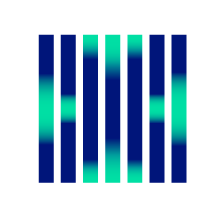XDR vs. SIEM: What’s the Difference?
XDR vs. SIEM: which one is right for your business? Both XDR and SIEM are powerful security tools that help capture data sources such as network data...
Experiencing an active breach? Call us immediately at 1-866-405-9156 UncommonX has experienced ZERO reportable breaches.
3 min read
 SOC Team of Security Experts
:
Apr 5, 2022 8:00:00 AM
SOC Team of Security Experts
:
Apr 5, 2022 8:00:00 AM

MDR vs. XDR: Which one is right for your business? While both are powerful security solutions for businesses, they each have their own uses and benefits. This being said, it's important to fully understand where XDR ends and where MDR begins.
Let's break down the key differences between MDR and XDR, why companies decide to go with one over the other, and how each solution can benefit your business.
XDR (extended detection and response) is a dynamic platform managed by IT security specialists. This modern network security solution unites several tools for threat detection and response and data analytics across an organization’s networks, servers, cloud deployments, endpoints, and more.
The key components of XDR include:
When leveraged by experienced IT professionals, XDR security can be a powerful, all-in-one network security tool.
Here are the key benefits of an XDR platform:
MDR (managed detection and response) offers a managed alternative or supplement to your in-house threat detection and response.
They key components of MDR include:
MDR isn’t a specific technology but rather a complete 'managed' service offered by IT security specialists. In a sense, it is an XDR solution - and then some.
MDR providers offer a total security solution. They take the power of XDR tools and combine it with the expertise, automation, and comprehensive coverage that a full cybersecurity team can deliver. As a result, it eliminates the burden of successfully managing XDR tools via limited in-house IT resources.
The primary benefits of MDR services include:
When deciding between MDR and XDR security solutions, you'll need to determine what your business can successfully manage in-house.
The most important question you'll need to answer is: Do you need a tool or do you need a tool and a provider?
XDR offers state-of-the-art IT tools that help IT departments combat cyber threats. MDR, on the other hand, is a fully managed and automated XDR solution.
Let's break this down even further:
Whether you're looking to upgrade your security tools or your entire security strategy, we've got you covered.
UncommonX provides our unified BOSS XDR platform for businesses that need keen, cutting-edge cybersecurity insights. We can also couple this with our advanced MDR solution to take full responsibility for the security of your network.
To learn more about how UncommonX can help your organization,contact our team of IT security experts today to request a demo of the BOSS XDR solution.

XDR vs. SIEM: which one is right for your business? Both XDR and SIEM are powerful security tools that help capture data sources such as network data...

MDR, EDR, XDR Broken Down Enterprise data protection can be a complex undertaking, and there are a variety of approaches that organizations can...

Enterprise data protection can be a complex undertaking, and there are a variety of approaches that organizations can take to secure their data. One...